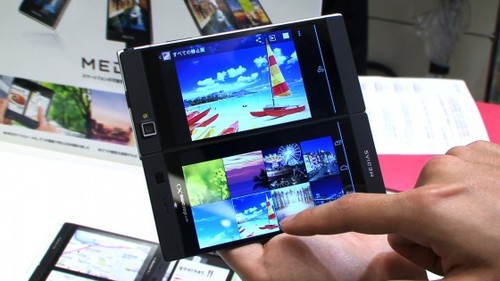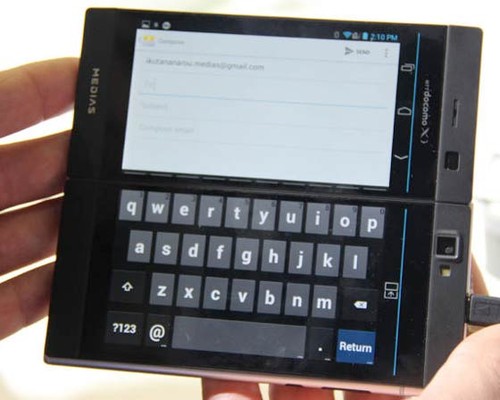The NEC Medias W N-05E Dual Screen Android Smartphone

The NEC Medias W N-05E smartphone features two screens that can work together; as one big screen (with a big black line down the middle), or as two independent 4.3-inch qHD (540 x 960) displays. The smartphone folds in half measuring 12.2mm thick, with a screen on both the main surfaces and opens up to feature a combined 5.6-inches screen diagonal. The large screen may be useful for getting a bigger view of maps and certain websites. The multitouch works across both screens, so you can pinch or zoom anywhere. In another mode the NEC Medias W is capable of using the two screens independently, e.g. the photo gallery app can show thumbnails on one screen and selected full screen images on the other. In case you need to enter text you can put the device sideways and invoke a program with the Android soft keyboard on the lower screen. The main specs of the NEC Medias are as follows: a dual-core Snapdragon S4 1.5GHz processor with 1GB of RAM, 16GB of storage with microSD expandability, an 8.1MP camera and a 2,100mAh battery.
Via:reviews.cnet.com



| Tweet |











